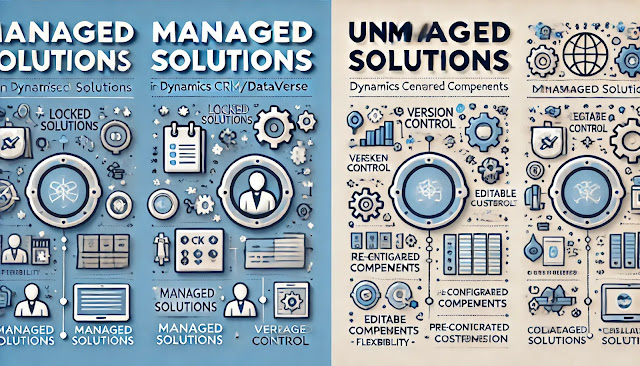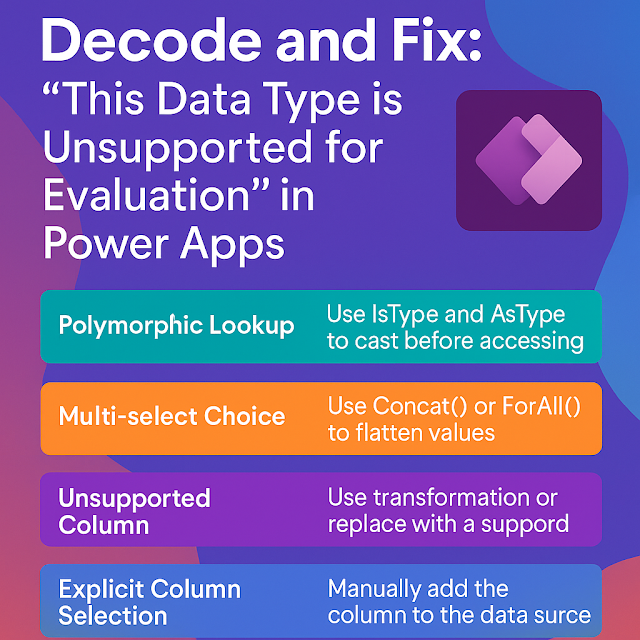Dynamics 365 Field Service : Configure agreements
In the world of field service operations, recurring services and maintenance contracts are common. Whether you're managing HVAC servicing, IT infrastructure support, or any kind of preventive maintenance plan, Agreements in Dynamics 365 Field Service are your go-to tool for automating and managing these recurring work orders.
This blog will walk you through:
- What Agreements are
- Key components of an Agreement
- How to configure Agreements step-by-step
- Best practices and tips
What Are Agreements?
An Agreement in Dynamics 365 Field Service defines a recurring service schedule. It helps organizations:
- Automate the generation of Work Orders and Invoices
- Maintain consistency in service delivery
- Reduce manual planning for recurring services
Think of it as a contract blueprint that auto-generates service tasks and billing over a period.
Key Components of an Agreement
Before diving into configuration, let's look at the key building blocks:
Here’s a step-by-step process to configure Agreements in Dynamics 365 Field Service:
Step 1: Enable Field Service and Agreement Feature
- Ensure your Field Service module is installed and Agreements feature is available. Agreements are part of the core functionality in the Field Service app.
Step 2: Create a New Agreement
1. Navigate to Field Service > Agreements
2. Click + New to create a new Agreement
3. Fill in basic information:
- Name (e.g., "AC Maintenance – ABC Corp")
- Customer Account
- Start Date / End Date
- Service Account
- Billing Account
The Service Account is where work is performed; Billing Account is who gets invoiced.
Step 3: Add Booking Setup
1. Go to the Booking Setups sub-grid
2. Click + New Agreement Booking Setup
3. Configure:
- Service Task Type (e.g., filter change, oil check)
- Recurrence Pattern (e.g., every month on the 1st)
- Start/End Date
- Work Order Type
- Generate Work Orders Automatically? – Yes
- Time Window (Start/End time for visits)
This defines how often work orders will be created and what services will be included.
Step 4: Add Invoice Setup
1. In the Invoice Setups section, click + New Agreement Invoice Setup
2. Configure:
- Recurrence Schedule (e.g., monthly)
- Billing Method (e.g., per visit or flat fee)
- Amount and Description
- Invoice Product/Service Line Items
This will auto-generate Invoices or Invoice Records according to the set schedule.
Step 5: Generate Booking and Invoice Dates
After configuring setups:
1. Click “Generate Booking Dates” from the Agreement command bar
2. Similarly, click “Generate Invoice Dates”
This will populate the Booking Dates and Invoice Dates sub grids with future scheduled instances.
These dates represent planned activities and billing schedules.
Step 6: Activate the Agreement
Once everything is configured and dates are generated:
1. Click Activate from the ribbon.
2. From this point, Work Orders and Invoice Records will be generated based on the schedule.
Note: After activation, updates to recurrence may require regeneration of dates.
Example Use Case
Scenario:
A facilities management company has a contract with a client to service air conditioners every quarter and bill them monthly.
Agreement Setup:
- Booking Setup: Quarterly service (every 3 months)
- Invoice Setup: Monthly billing of \$500
- Work Order Type: Preventive Maintenance
- Service Tasks: Filter cleaning, gas check, system test
The agreement will now create:
- 4 Work Orders per year
- 12 Invoice records per year
Best Practices
- Always preview Booking Dates before activation
- Use Service Task Types to standardize recurring work
- Link Agreements to Customer Assets for asset-based servicing
- Monitor Agreement Expiry to alert customers for renewal
- Keep agreements modular—create separate agreements for very different service types
Reporting and Monitoring
- Use Dynamics dashboards to track:
- Agreement Status
- Upcoming Work Orders
- Invoicing trends
- Service performance per agreement
Power BI can also be connected to provide more visual analytics for recurring contract performance.
Final Thoughts
Agreements in Dynamics 365 Field Service allow businesses to move from reactive to proactive service management. Whether it’s a maintenance contract, warranty service, or a subscription-based field service plan, Agreements streamline the entire lifecycle—from scheduling to billing.












Comments
Post a Comment